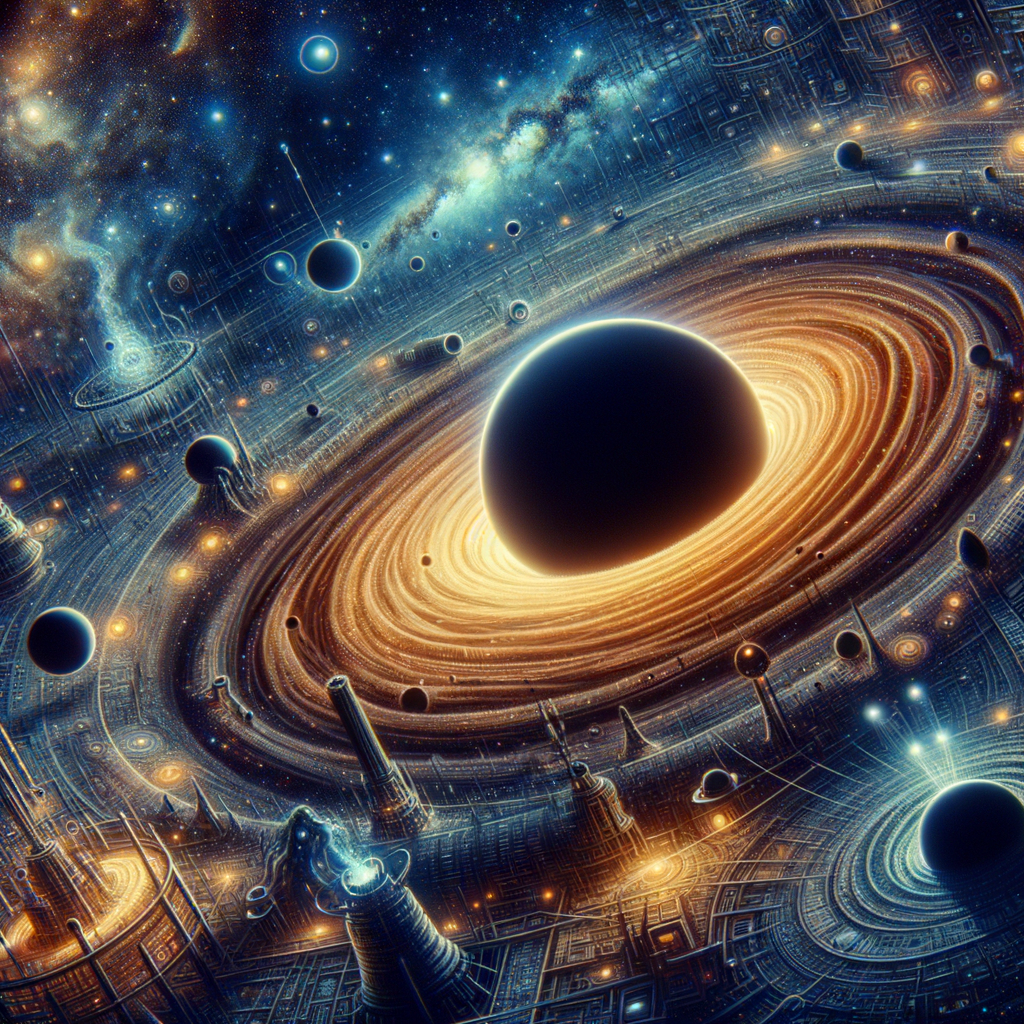Our universe is a vast and complex tapestry of celestial wonders, and at the heart of many of these cosmic phenomena lie the enigmatic black holes. These dense regions of spacetime might seem like mere cosmic vacuum cleaners at first glance, but they play a far more sophisticated role. In this article, we will explore how black holes are not just destructive forces, but also key players in cosmic growth and the evolution of the universe itself.

Galactic Architects: The Role of Black Holes
Black holes are often perceived as the ominous predators of the cosmos, silently lurking and waiting to devour anything that strays too close. However, in the grand scheme of things, black holes are among the most influential architects of galaxies. At the center of nearly every large galaxy, including our very own Milky Way, lies a supermassive black hole. These gravitational behemoths exert a strong influence over the stars, gas, and dust in their vicinity, helping to shape the overall structure of the galaxy.
One might wonder how something that swallows everything in its path could contribute to creation. The answer lies in the dynamic processes that occur around black holes. When matter falls into a black hole, it doesn’t simply disappear. Instead, it forms an accretion disk—a swirling whirlwind of superheated gas and particles. The intense gravitational pull heats this material to extreme temperatures, causing it to emit powerful radiation that can influence star formation in the surrounding galaxy. In this way, black holes help regulate the growth of new stars, acting as a cosmic thermostat.
Furthermore, the jets of high-energy particles that are sometimes ejected from the poles of black holes can travel vast distances, impacting the intergalactic medium. These jets can trigger the formation of new galaxies by compressing gas clouds, causing them to collapse and form stars. Thus, black holes, through their complex interactions with their surroundings, are essential in the grand cosmic architecture, building and reshaping the structures that make up our universe.
Cosmic Dance: Black Holes and Universal Evolution
The dance of black holes is not limited to their role within individual galaxies. These cosmic dancers also play a significant role in the evolution of the universe as a whole. One of the most thrilling cosmic ballets is the merger of black holes. When two black holes spiral toward each other and eventually collide, they send ripples through spacetime known as gravitational waves. These waves carry information about the properties of black holes and the history of their interactions, providing valuable insights into the early universe.
Black holes also serve as time capsules, preserving the history of the universe. As matter falls into a black hole, it can carry information about the conditions of the universe at different epochs. Studying the radiation emitted from the vicinity of black holes allows astronomers to peer back in time, uncovering the secrets of the universe’s evolution. This makes black holes not just participants in the cosmic dance, but also chroniclers of the universe’s grand narrative.
Moreover, black holes might hold the key to understanding dark matter, the mysterious substance that makes up a significant portion of the universe’s mass. Some theories suggest that primordial black holes, formed shortly after the Big Bang, could be a component of dark matter. By studying these ancient black holes, we could unlock deeper mysteries about the composition and evolution of the universe. In this way, black holes are both dancers and detectives, uncovering the enigma of our cosmic origins.
Black holes are undoubtedly one of the universe’s most fascinating and enigmatic phenomena. Far from being mere cosmic destroyers, they are vital to the growth and evolution of the universe. From shaping galaxies to preserving the history of the cosmos, and perhaps even holding clues to the nature of dark matter, black holes are truly the cosmic architects and dancers of our universe. As we continue to study these extraordinary entities, we can only marvel at the intricate and beautiful tapestry they help weave in the vast expanse of space.








